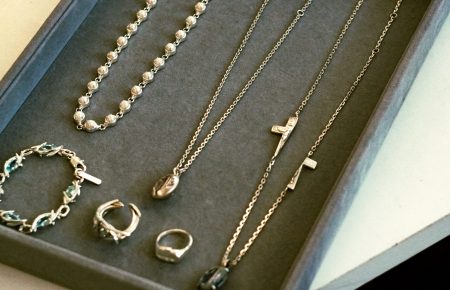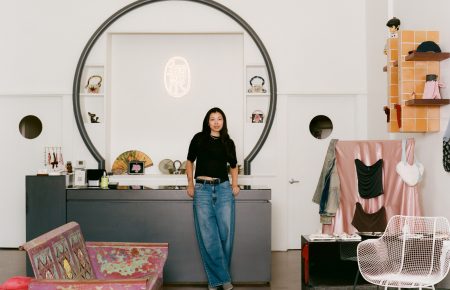With the great migration westward, how do East Coast stores acclimate and open up shop responsibly in a new city with a different consumer? What does brand ethos and integrity look like in what some might consider a rival city? For Bodega and its three co-founders, the move west has been about staying authentic as individuals and staying honest to what has always worked for the store and their relationship as owners.
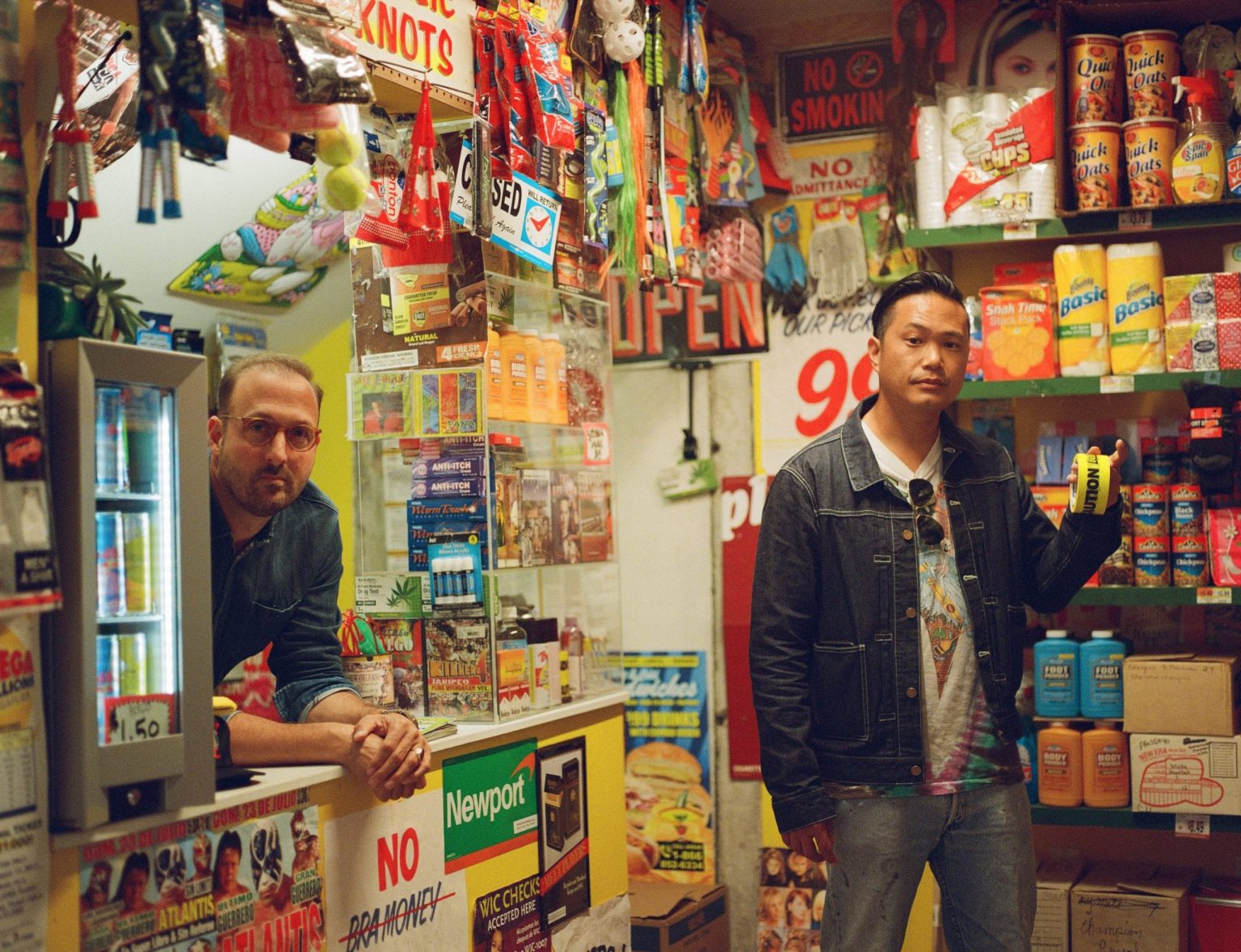
Jay Gordon (left) and Oliver Mak (right) in the bodega corner of the Downtown Los Angeles Bodega store.
If you walked past Bodega, you wouldn’t know it. The store is “hidden in plain sight.”
The concept is true of the Boston boutique, which opened over a decade ago in 2006, and continues on to its new 8,000-square-foot location in Los Angeles, which opened earlier this year. On the West Coast, the front looks like a shipping dock entrance, strewn with crates of watermelon and mangoes (on this occasion, at least. They change out the produce seasonally). Step past the boxes of fruit and enter streetwear Narnia with limited edition sneakers on your left while your approach to the beautiful staircase ahead allows you to scan the room and take everything in. On the very right is a hidden Vans Vault cove and next to that is a bodega stand stocked with soda, paper towels, Windex, cup noodles, and other household goods; Bodega staying true to their namesake. And that’s only on the first floor.
The Bodega business model is characteristic of the store’s founders. Oliver Mak, Jay Gordon, and Dan Notola embody the behind-the-scenes, cool and calm vibe of the store, which might cause first-timers looking for the store (or the owners) to take a thoughtful minute to make sense of it all. The trifecta that founded and runs Bodega possesses varying roles and perfectly complementary skill sets that have sustained their twelve-year (soon to be thirteen) life and business journey together.
When it opened in 2006, Bodega Boston was an innovative concept, that had a potentially similar inventory to other stores, but offered a completely unique experience. Sure, there were speakeasies for bars and restaurants, but that secret door idea seemed reserved for the food and beverage world. Some stores were locked to the general public and only granted access to those who knew which doorbell to ring, but that didn’t encourage discovery in the way that Bodega made use of an East Coast community staple: the bodega aka corner store aka stop-and-shop as a front for the treasure behind.
While working at Antenna Magazine in 2008, I got news that we were stocked at Bodega, and I wore that fact like a cultural badge of honor. It really felt like a “we made it” moment because our editorial staff prided themselves on making a smart magazine and it was a match made in heaven for us to be in such a forward-thinking but grounded store.
Fast forward to a new location, on the opposite coast, twelve years later.

The entrance “hidden in plain sight.”

The sneaker wall stocked with Nike, Converse, Adidas and Vans to name a few.
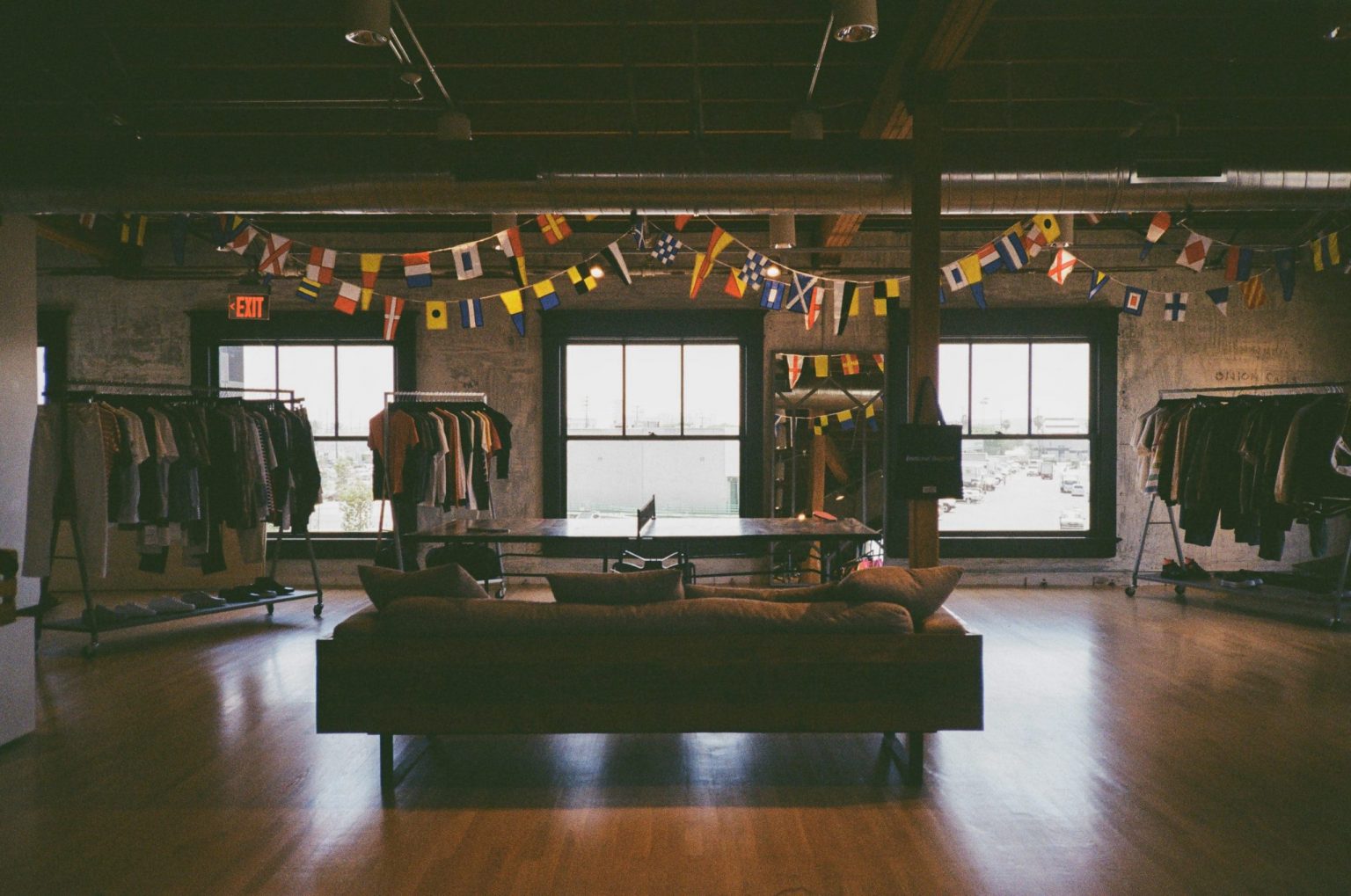
The top floor of the 8,000-square-foot space equipped with ping pong table and cozy couch.
In Los Angeles, we live in our cars. There is no stumbling into a new shop. There is point A to point B and Waze to find the quickest way to take us there. To see and to be seen is important. The speakeasy, “have to be in-the-know” approach worked in 2006, but whether it works in 2018 is questionable. Bodega started in and still considers its home base Boston, a city filled with college kids and a “real recognize real” mentality in its small subsect of streetwear and art consumers. Compare this to the West Coast’s completely popularized men’s fashion/hype-wear subculture, with consumers a decade younger who are unlikely to have heard of the store, brand, or any of the owners.
Nowadays, the most popular brands are strongly linked with well-known personalities. In light of that, the success of Bodega while Oliver, Jay, and Dan remain low-key is a strikingly different approach. The hope is that ego doesn’t need to win out and that the culture behind the brand is ultimately bigger than a personality. Take the success of a Ronnie Fieg from David Z to Kith on a sneaker scale, or Virgil Abloh from Been Trill and Pyrex to working with Kanye West (who also, of course, has his own line). And it doesn’t stop there. Consider from a high fashion perspective, Gosha Rubchinskiy, whose name gives power and significance and allows for higher price points for various collaborations with Burberry and adidas. Vetements seems synonymous and interchangeable with Demna Gvasalia. Raf Simons, regardless of where he takes his talent (whether it be his own line or Dior or Calvin Klein), will always have loyal Raf followers.
Stepping up and stepping out, it seems, works well for business. However, Oliver, Jay, and Dan maintain the identity and integrity of Bodega without fusing their personalities to the company, while making rent on an 8,000-square-foot space, and acclimating to LA. They are doing this without overtaking, downplaying or disregarding that they are new but experienced in an established but changing city that isn’t their own. It begs the questions: How?
Quite simply, their approach in 2006 in their approach for 2018. What’s old is new again and their quiet confidence continues to lead their business model: stay true and consistent while doing what feels the most natural to each owner given their individual personalities and dynamic as a unit. The owners of Bodega have intentionally chosen to stay “hidden in plain sight” and continue to buy products that they believe in with a focus on art, music and community. The concept has only gotten better with time. Their chosen path has grown their business with authenticity to the brand, without having to play off of ego for the owners. The warm and knowledgeable staff just seem happy to share their space with you, introducing their curated offerings with stories and anecdotes about their favorite items in the store and why.
Bodega is not the cool kids store with cool gear. If other stores are that friend with the apartment but who’s stingy about sharing the amenities, Bodega is that other friend with a huge house and gigantic pool on a summer day who wants to invite everyone over to enjoy. You just need to get the address and find it.
While others are shouting, Bodega is waiting for you discover and enjoy all that they have to share. Bodega will be here when you find it.
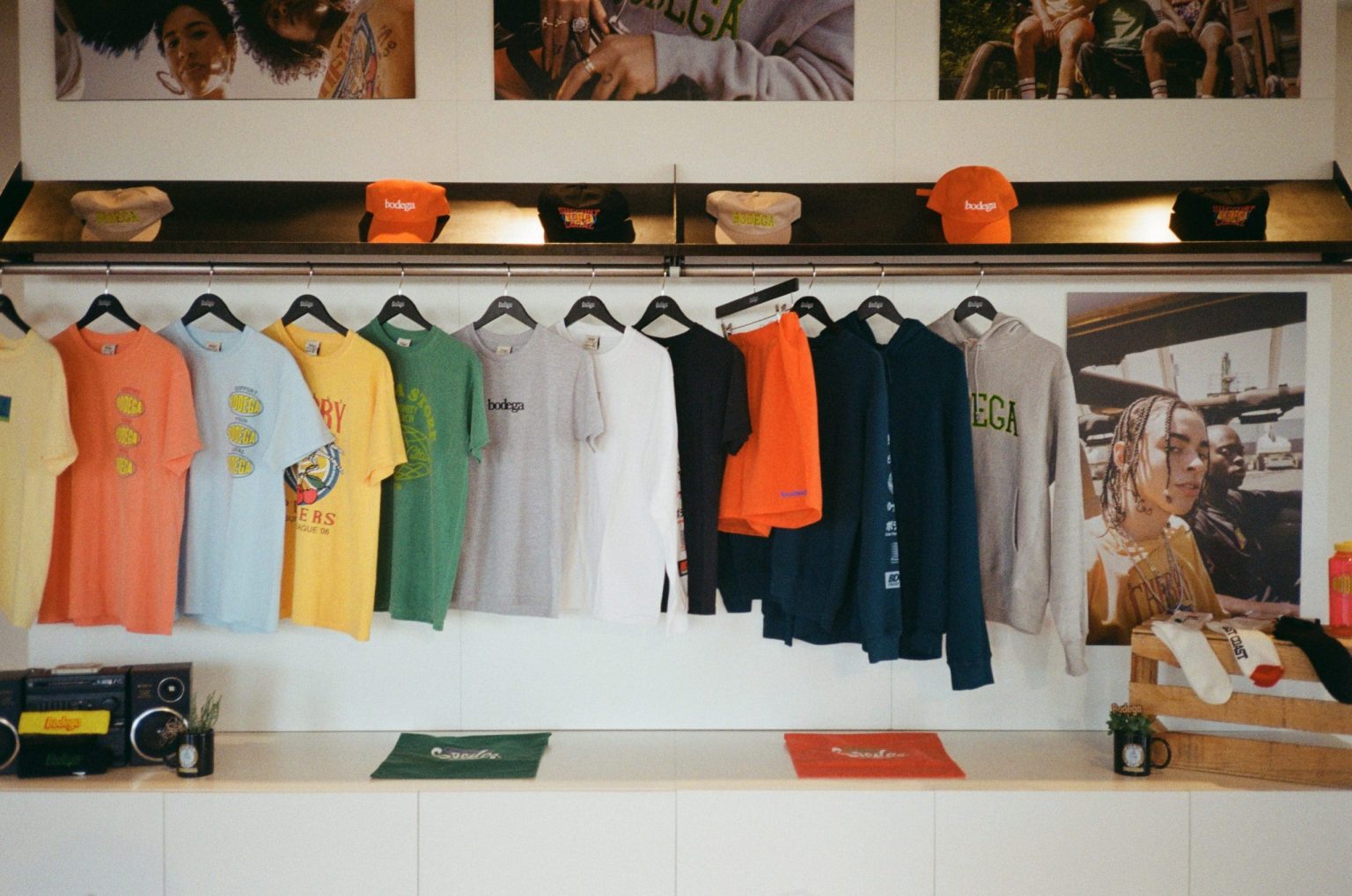
Bodega’s own product on display.
“At least with LA, we saw a city that’s getting better and better, better culturally, as far as food, art, a lot of people moving here from the east coast, a lot of people who are already out here doing great things—it’s a special city.”
— Jay Gordon on the decision to open a second location in Los Angeles.
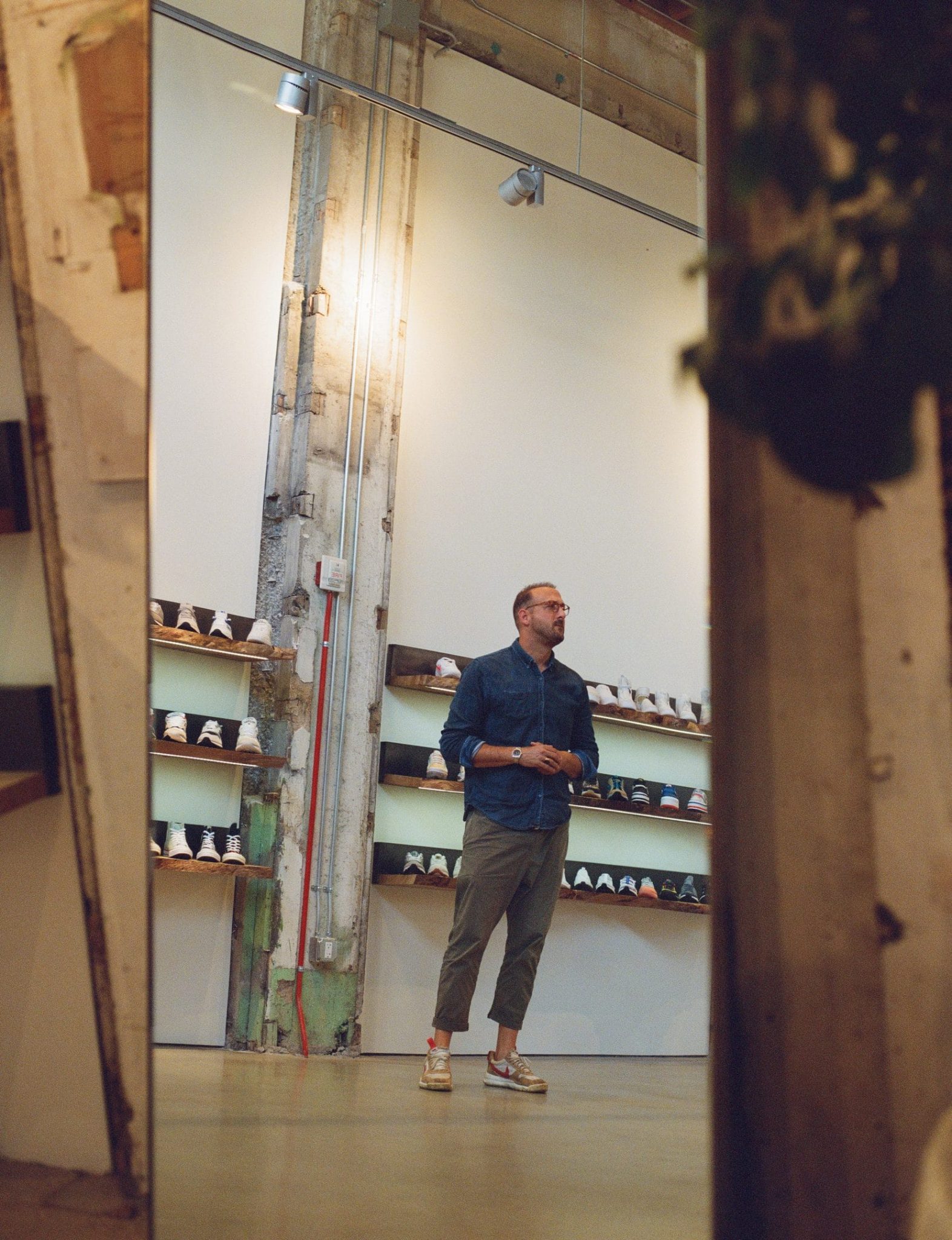
Jay Gordon (in his Nike x Tom Sachs Mars Yards) having just gotten back from Paris market.
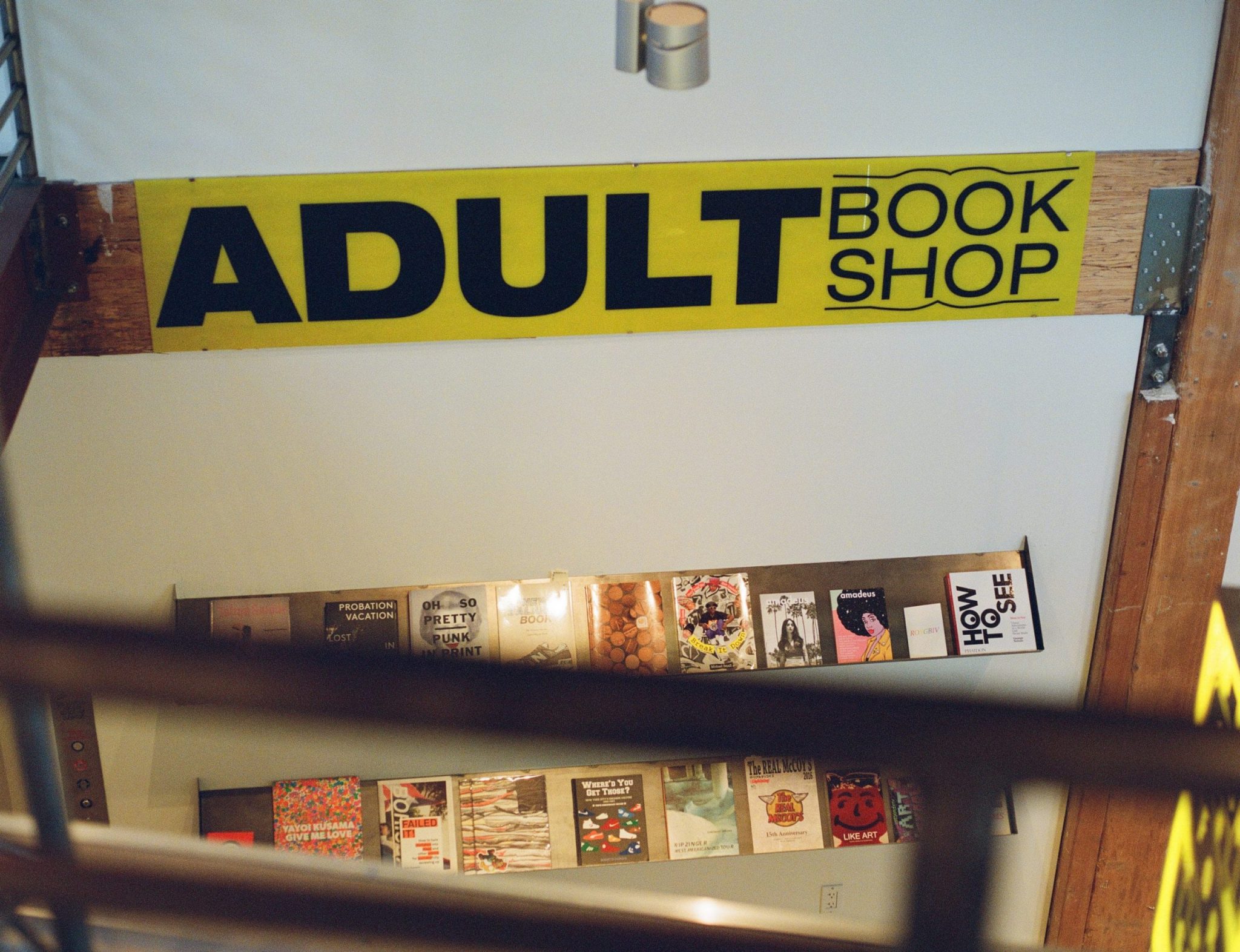
Books and zines also for sale.

The window overlooking LA’s historical hub for produce distribution.
Sarah Kim: Can you talk about when you guys met in 2006, Bodega, Boston, the landscape, and what that was like?
Oliver Mak: When we started we were doing a lot of renegade loft-type parties, infusing art and music, sometimes fashion, and there was no opportunity to do a brand or anything counterculture in the city and we needed to make our own clubhouse to be able to do the creative projects we wanted to do. It was born out of necessity.
Sarah: When you guys decided to launch Bodega in Boston, was there anything else like it?
Jay Gordon: No, nothing. It was originally Oliver and me joking and talking about different possibilities. The first thing that I remember was the clothing line. Then there was talk of doing a restaurant as the front of a retail store. We talked about stuff that was sort of ubiquitous in neighborhoods and came back to the bodega idea and then Dan got involved. Oliver knew Dan and brought him in. I was not sold on him at the beginning, but we became fast friends.
Oliver: He was already this legendary artist that we knew from the scene. We were brought together by the Floorlords bboy crew to work on the Hip-hop Peace and Unity festival with the mayor’s office. KRS One and Big Daddy Kane were headlining at City Hall. He had all these strengths and qualities and network that Jay and I were lacking. That’s been a big thing that has always benefited the three of us.
Sarah: How did LA, this store, and 2018 come into being? You guys have been friends and partners for 10+ years.
Jay: I was convinced that this was a necessity for the brand to get us to the next level and we all started seeing what we could do out here. The guys who were doing leasing for The Row said they were building this spot—this sort of urban oasis that was only open to independent retailers and restaurants which is so rare for a project this big.
It took longer and cost more, but we’re lucky enough to have a space that tells who we are, it’s not just about selling product, it has a lot of cultural aspects as well and we’re making sure it stays that way.
Sarah: Why LA? Especially when people say retail is going the way that it’s going. So many other stores have opened up around here. It’s Lakers versus Celtics.
Jay: But in the rivalry, you can’t have a rival that isn’t on the same level. At least with LA, we saw a city that’s getting better and better, better culturally, as far as food, art, a lot of people moving here from the east coast, a lot of people who are already out here doing great things—it’s a special city. It’s very different from Boston, but it has a ton to offer.
Oliver: We’ve always consumed so much art and counterculture movements that came out of this area. LA is a part of our identity as much as anywhere else.
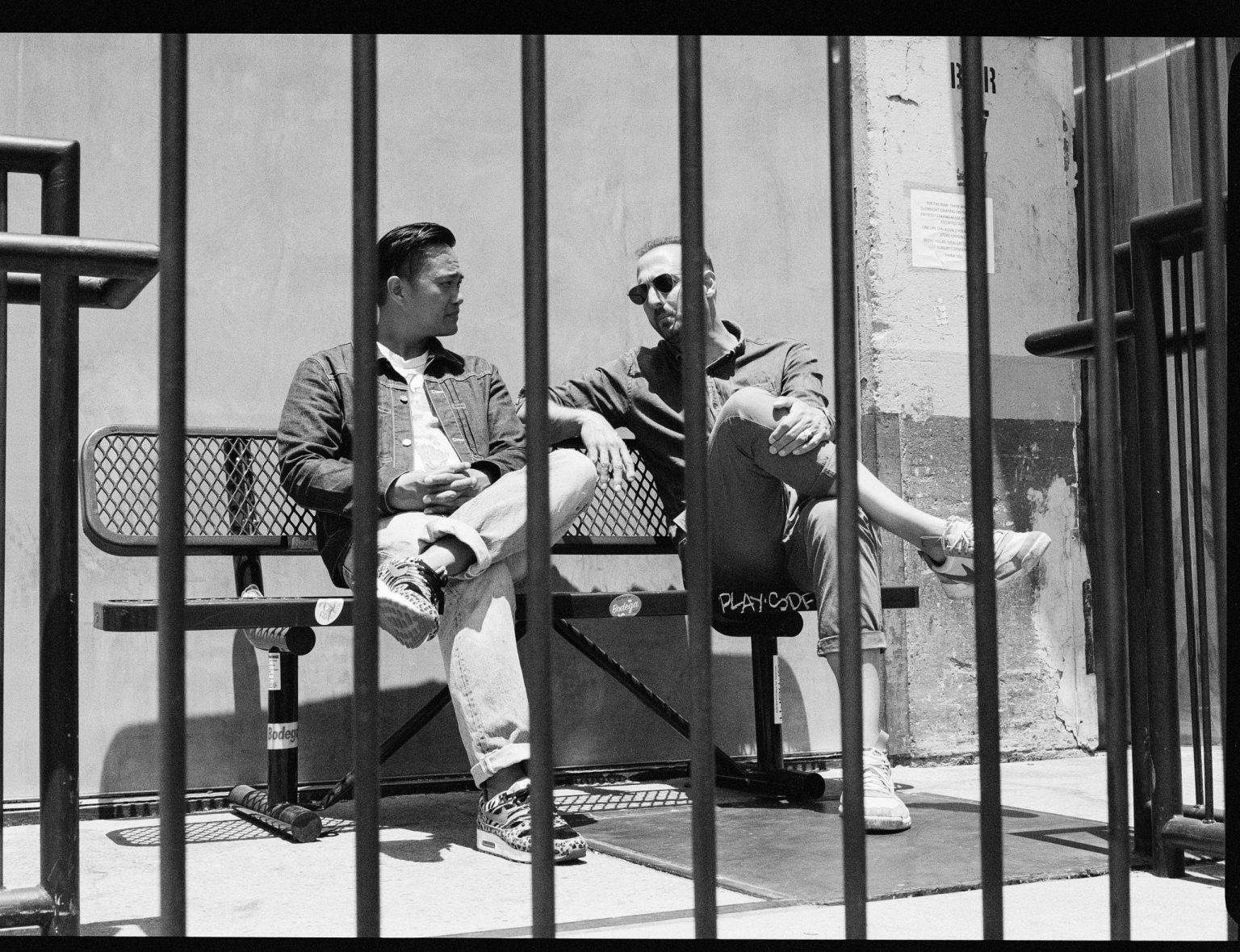
Oliver and Jay enjoying a seat in Downtown LA’s The Row, where Bodega is located.

Posters drawn by Kenji Nakayama decorate the fruit-filled entrance.
Sarah: How does “hidden in plain sight” work, when everyone else is screaming for attention, social media is what it is, and names are attached to brands? I feel like you guys are doing everything in a way that is opposite from others.
Jay: If you don’t have to focus on shouting your name from the rooftops, you can focus on doing stuff that can be impactful and long-lasting, interesting and engaging. Obviously, we know about marketing and advertising, but we have product that people are passionate enough about that we can go the other way.
When you guys talk about culture and not just selling product, what are the other things that you hope that someone who walks into Bodega leaves with?
Oliver: The important part of street culture is it kind of unifies all these marginalized people and viewpoints from things that are not mainstream. Naturally, the space allows for us to have that same connection that we used to have through barber shops or record stores.
Sarah: Do you ever take a chance on certain brands? How has that played out, especially with budgets in mind?
Jay: Stone Island is probably a good example of a brand that we were very tight with, we had a very strong relationship with their U.S. distribution company which happened to be out of Massachusetts. When they became popular, we were already well in with them and could do special projects. They were supportive of us, because we were supportive of them and it was just us recognizing great product.
There’s the flipside where we’ve tried a ton of brands that never went anywhere, but we tried them because we saw something there, and you’re not going to hit every time but it’s worth a try.
Sarah: Can you describe each of your roles? How does the trifecta work?
Jay: Oliver has way more strengths on the creative side. Dan is more of the general operations and I handle the boring business stuff, but we all do a lot more as well. Interact with customers, interact with vendors—it’s non-stop. It’s great, because it’s different every day.
Having gone through life changes, gotten married, had kids, is there something that keeps things working between you?
Oliver: There’s a lot of trust we’ve built over a decade. If someone believes really deeply in a project although someone disagrees, let’s support them. I think we’re good with working without ego.
Sarah: But that’s so rare. I feel like this industry operates on ego.
Jay: I think in some ways it’s hurt us because we didn’t want the store to be about us, and in some ways that made it harder to identify with Bodega, because it wasn’t about a person. We have a huge staff of awesome people, some who have been with us the whole time, and it’s about all of us.
Oliver: I think you have to do what comes naturally to you. I chose to hide behind a pair of turntables and make up a fake name so that I could be in the corner of a party, but still be part of it as a DJ. That’s what Bodega is for us—it’s this other flag that we can all stand behind.

Kenji Nakayama’s Bodega sign as you enter into the shop and the bodega within the store itself.
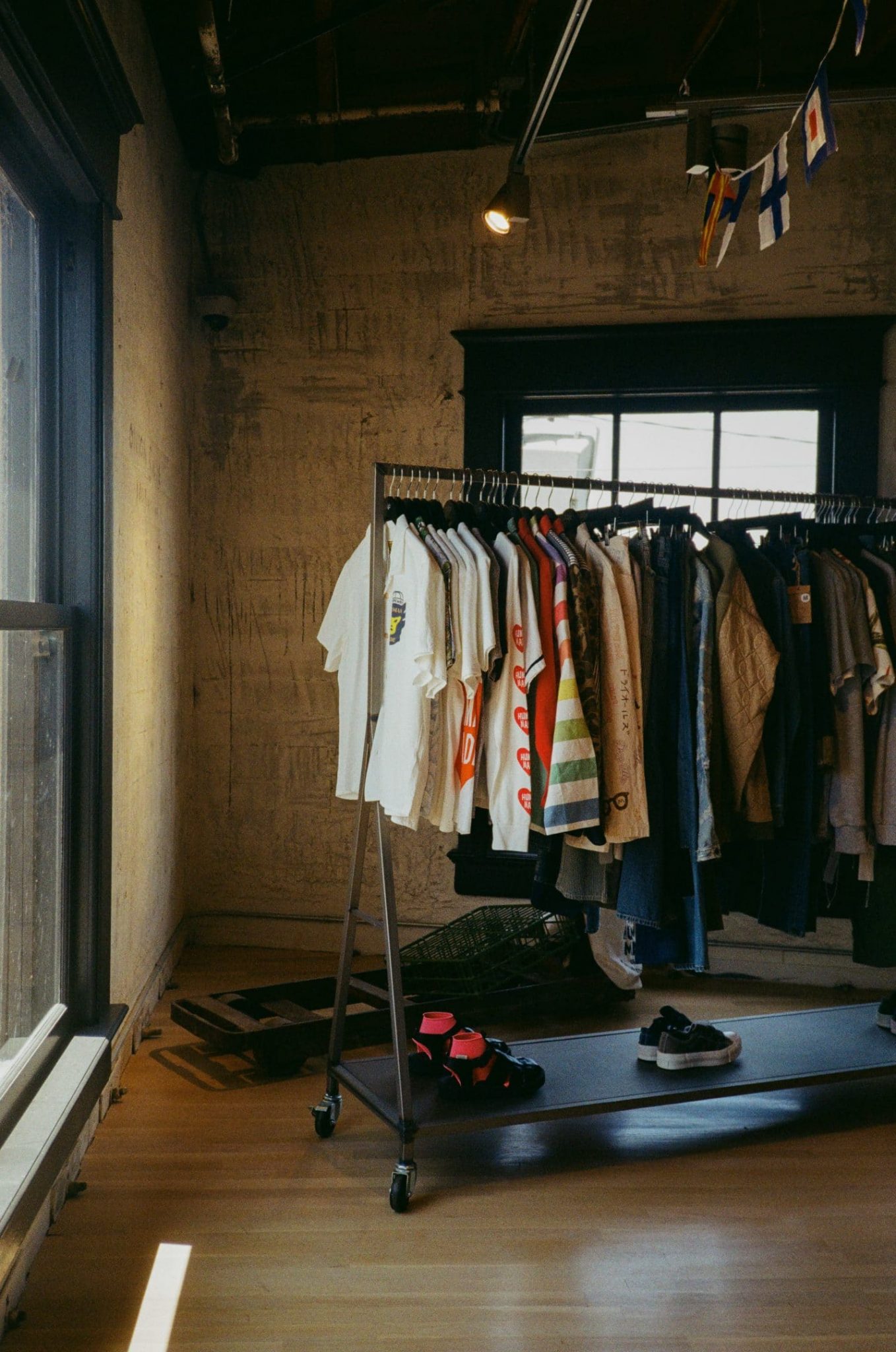
Bodega stocks Human Made, Perks and Mini, Wacko Maria and Stone Island among others.
“There’s a lot of trust we’ve built over a decade. If someone believes really deeply in a project although someone disagrees, let’s support them. I think we’re good with working without ego.”
— Oliver Mak on how the relationship between the three co-owners weathered the last twelve years of being in business together.
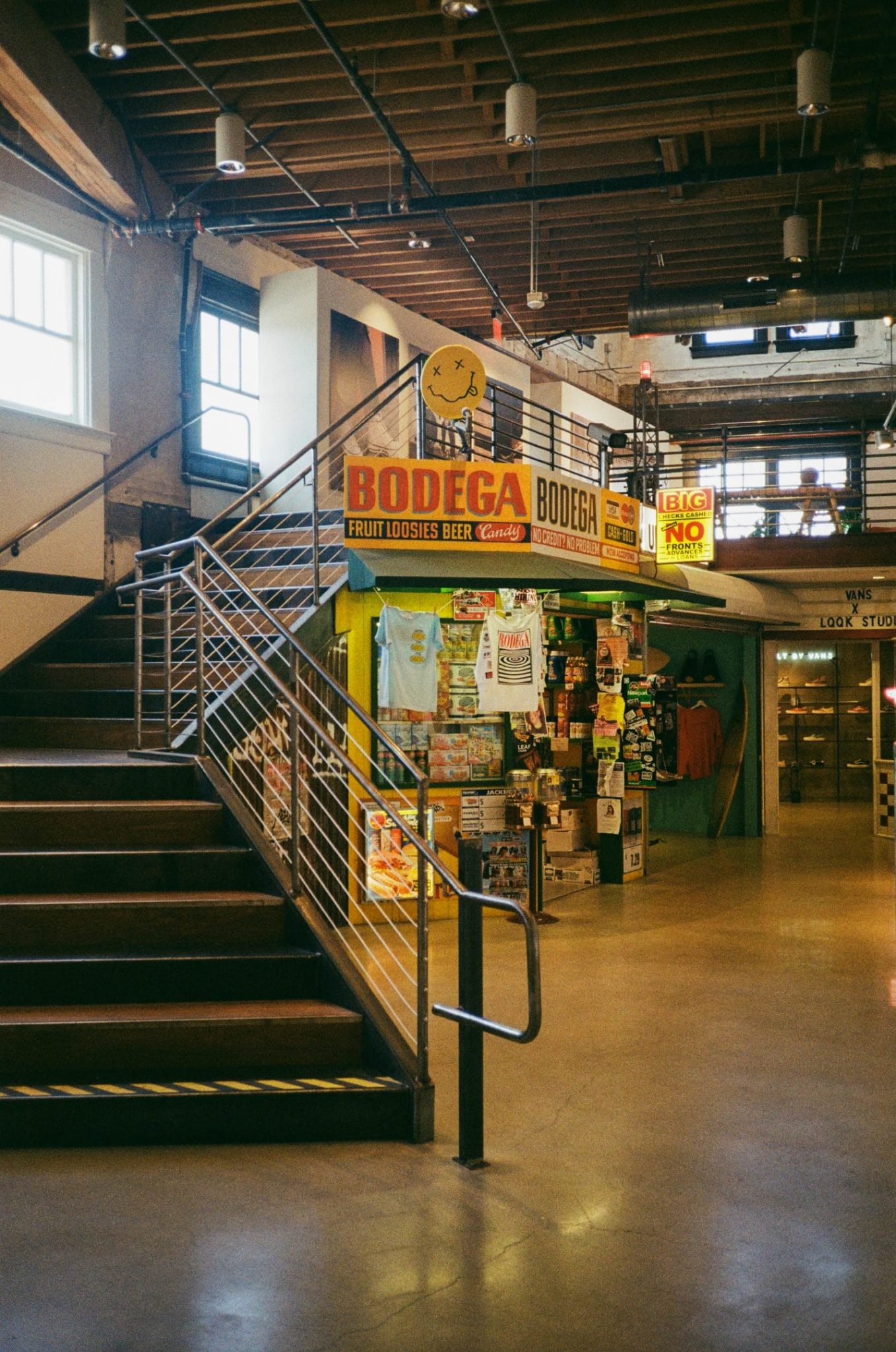
The staircase that sits above the “bodega” encourages exploration to those entering.
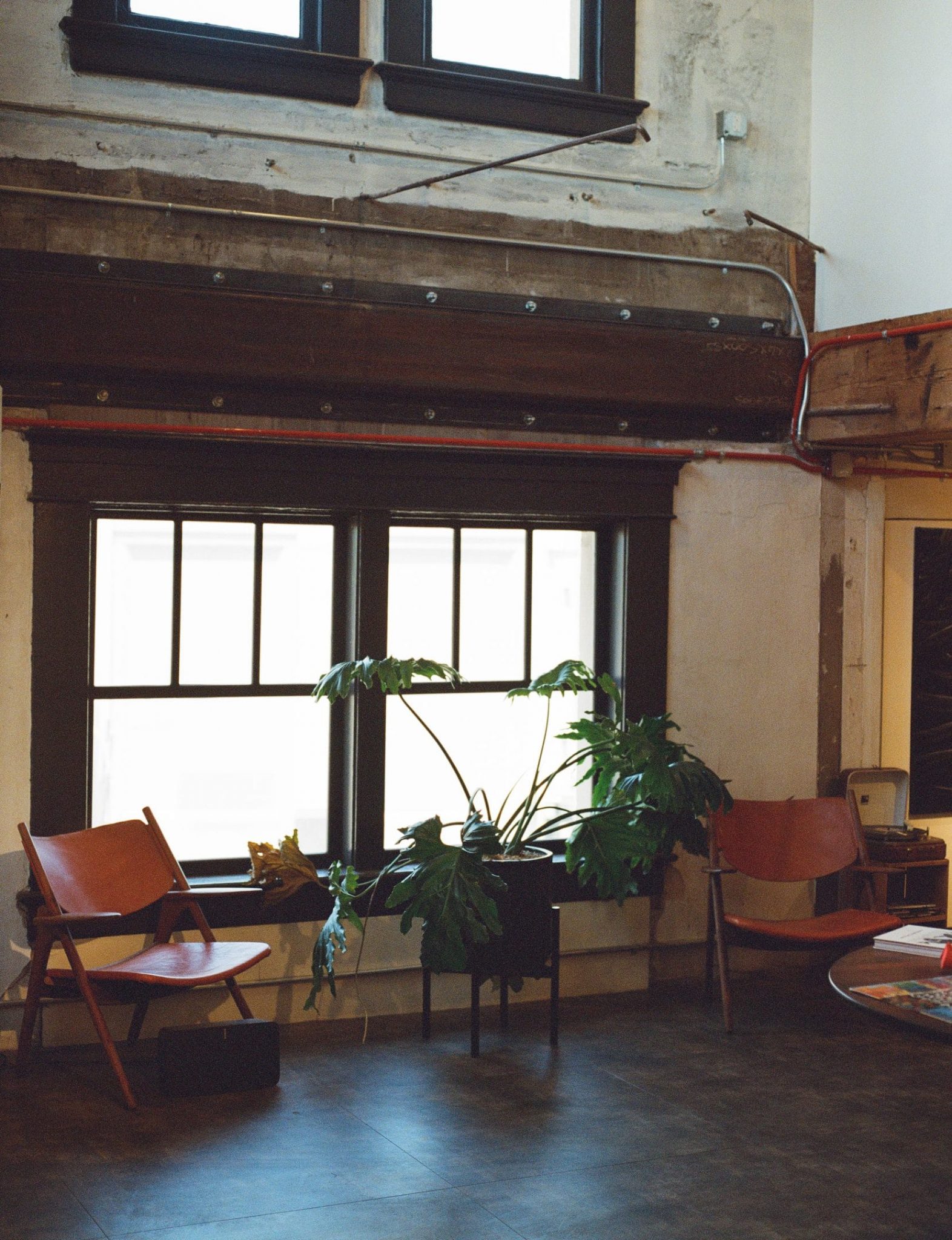
The second level acts as a rotating gallery of sorts with works by Blue the Great and campaign imagery from a Midnight Studios x Converse collaboration event.
Sarah: Do you have any favorite projects or anything that encapsulates what you guys are talking about?
Oliver: There was a crazy experience at the Art Book Fair where someone came up and was like, “You’re the reason why I stayed in this city. I started the Boston Art Review because the Boston Art Book Fair showed me that this city can be more.”
That’s why we ran an art gallery, why we do the Book Fair: to be able to bring resources and create things in our communities that don’t exist because we have access. It’s an amazing honor to be able to do stuff like that.
You can’t avoid a Skid Row or a City Hall where a lot of marches go on, what I would be interested in is what responsibility there is to the city.
Jay: There’s certainly no easy answer to Skid Row. And that’s been here for how many years? We actually had an experience at the beginning when we first opened where people were paying a lot of homeless people to wait in line for shoes. I thought it was an amazing true act of capitalism, that these people could make some money. It wasn’t very popular with everyone else, but I think there’s things that we can do to help influence the neighborhood to help people.
I’m trying to work with some of the produce people to help get some of the produce that gets thrown away to give them to the right people.
Oliver: In July we’re doing a shoe drive. We curated two art shows last year, one for Standing Rock and one for Puerto Rico.
Sarah: Where do you see Bodega in 5 years?
Jay: I would love to see it grow, but I would love to see it as our vision and for it stay small. Every other day I think I have a different perspective on that. I think it’s very personal to us now. If it’s too big you can’t help but lose some of that.
Oliver: I want to see the people we started out with, really become more varied in their skill set, grow as managers, grow as people. We see the people we’ve gotten to meet and influence turn into the next generation of creative visionaries. So if we can keep on growing with them and incorporate their perspective into what we do, I think that can grow us into a larger collective organically. Who knows where it will take us, but we’re open to where the winds steer us.
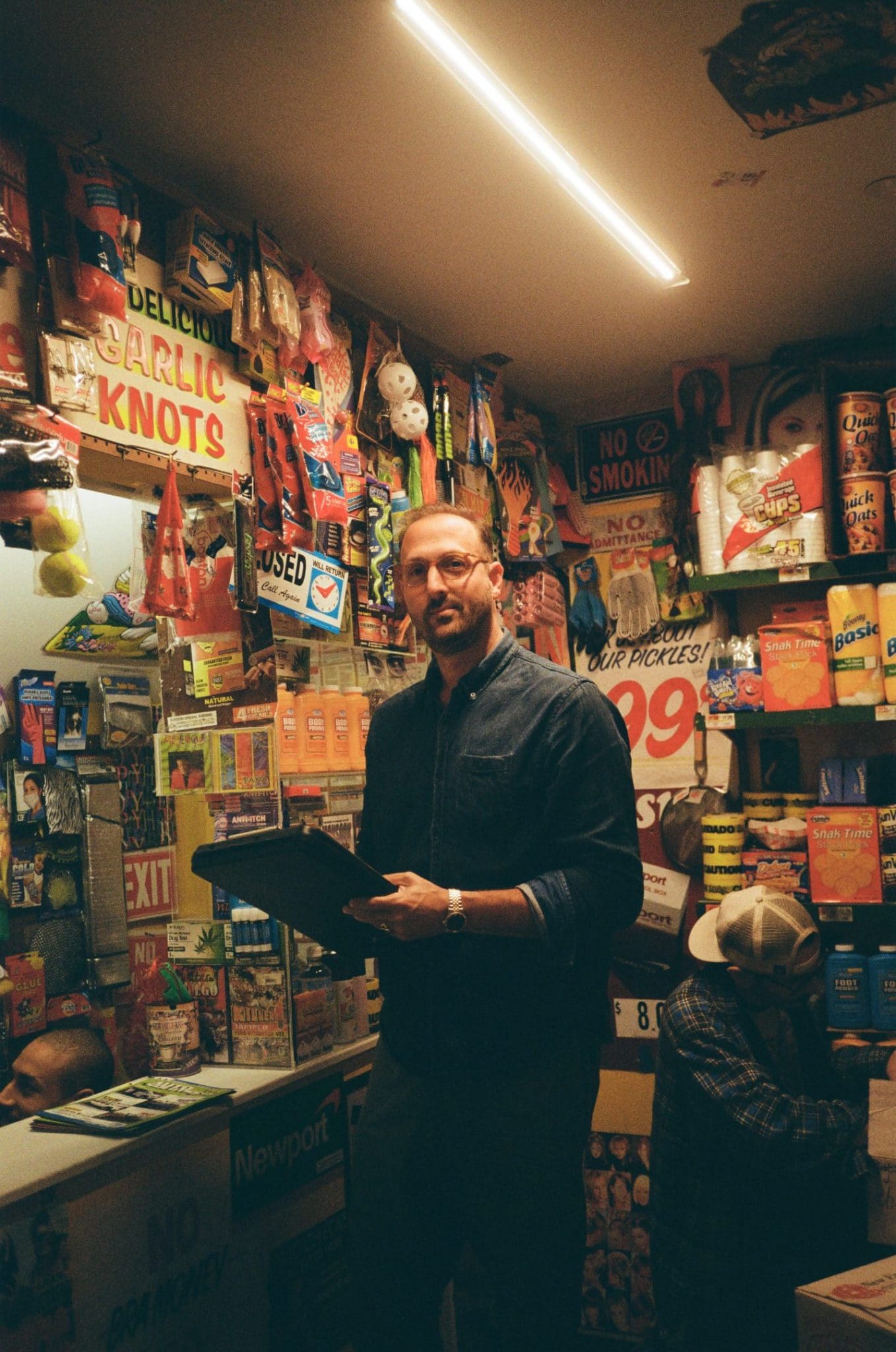
Oliver Mak.

Jay Gordon.
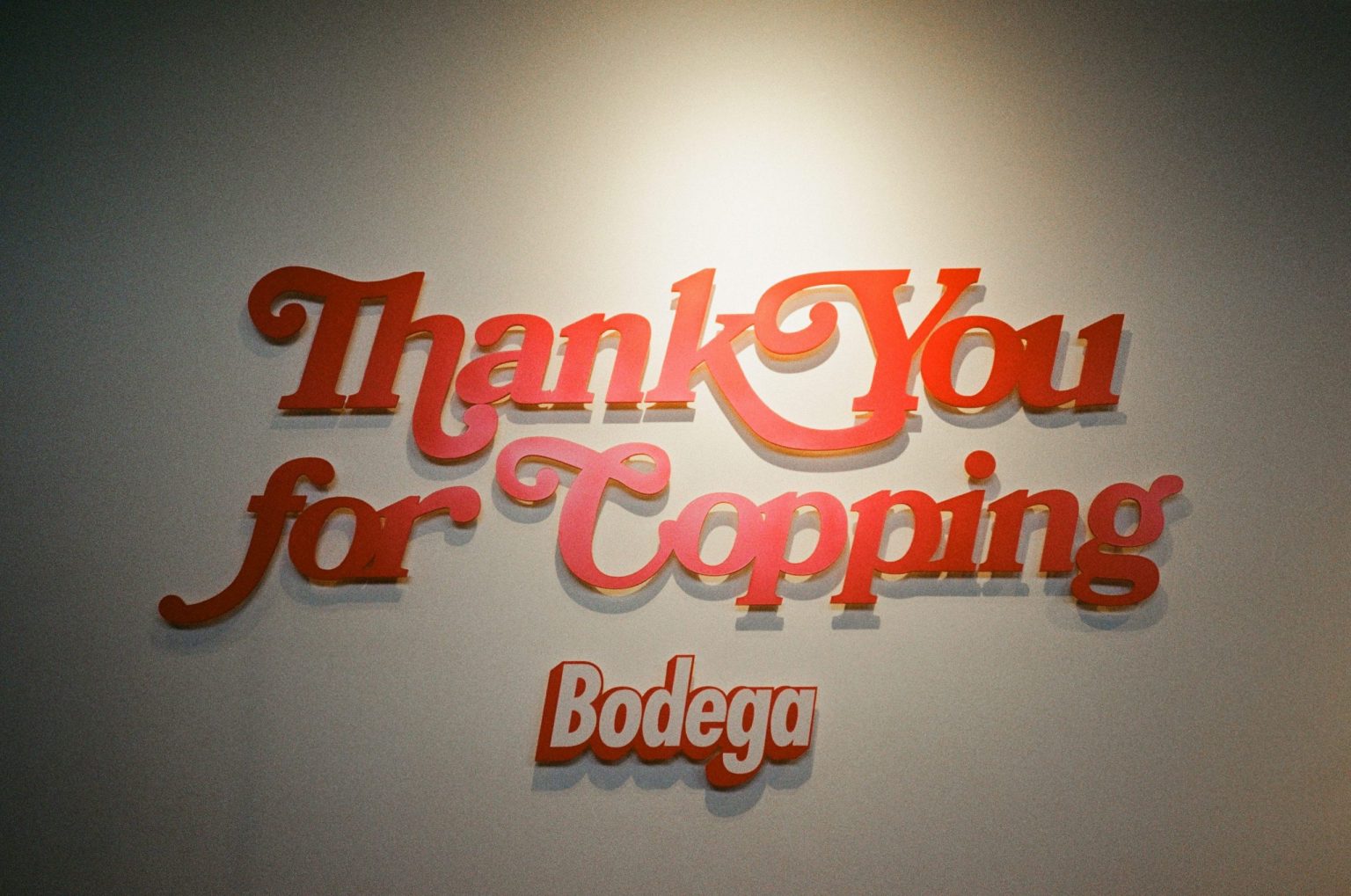
Bodega’s farewell as you exit.












